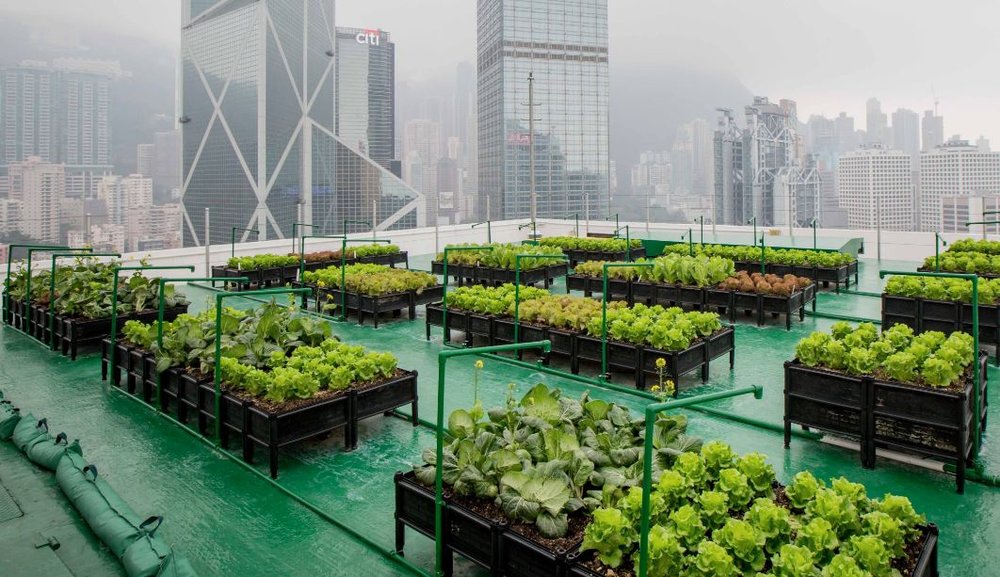10 Simple Techniques For City Blooming
10 Simple Techniques For City Blooming
Blog Article
Get This Report on City Blooming
Table of ContentsCity Blooming - Truths9 Simple Techniques For City BloomingTop Guidelines Of City BloomingLittle Known Questions About City Blooming.The Ultimate Guide To City Blooming
Fascinated in growing food for sale in the City of Chicago? Below is a listing of regularly asked concerns regarding the regulations and policies that growers need to think about when preparing an urban farming project.
The zoning modification does not customize any type of various other codes handling composting, structure authorizations, purchasing or renting City possessed property, company licenses or ecological contamination. There are existing codes that manage these issues and they stay completely effect and may apply to your task. Neighborhood gardens are typically owned or handled by public entities, civic companies or community-based companies and kept by volunteers.
Urban farms grow food that is intended to be sold, either on a nonprofit or for-profit basis. Because of their industrial function, metropolitan ranches need a service certificate. Yes. An area yard is enabled to market surplus generate that was expanded on site if the sales are accessory or secondary to the garden's main objective defined over.
The 9-Minute Rule for City Blooming
The amount of compost material can not exceed 25 cubic yards at any type of offered time according to the standards in 7-28-715 of the City's Municipal Code. Since the dirt at most brand-new garden websites needs changing, garden compost, soil, timber chips, or other products can be obtained to construct or boost the expanding space.

If a building authorization is needed after that the hoophouse will certainly be taken into consideration an accessory structure. You can discover even more about the structure permit requirements by contacting the Division of Structures. The 25,000-square-foot dimension limitation is planned to avoid a single neighborhood garden from dominating a given block or interfering with the block's existing residential or business personality.
The limitation does not use to yards located in Public Open Space (POS) districts. Can there be more than one area garden that is 25,000 square feet on a single block? Yes. The size limitation puts on specific gardens, not to private blocks. No. Secure fencing is not required, nevertheless, gardens that have big parking lot might be needed to mount fencing or other landscaping attributes.
Not known Facts About City Blooming
B1 & B2 areas need that all industrial use activities be conducted indoors. Is fence needed for urban farms? Fences may be needed, along with landscaping and testing, for particular auto parking locations and outdoor job or storage locations depending on place and the details task taking place.
Urban ranches require structure authorizations and zoning approvals prior to building (indoor plants). Other kinds of city testimonial may be called for depending on details frameworks, activities, dimension, landscaping, licensing, public heath and stormwater monitoring problems.
Yes. The kind of permit is identified by what is taking place at the site. The Division of Business Affairs and Customer Protection can assist determine the particular type of organization license that's needed. Yes. Off street auto parking is required for a lot of business jobs in Chicago. The called for number of garage is based upon the number of staff members servicing site and not the square video footage of the growing area.
The Single Strategy To Use For City Blooming

Yes. An urban farm can market compost product produced on site, however, the operation must conform with the laws navigate to these guys in 7-28-715 of the Chicago Municipal Code. Yes. Aquaponic systems are allowed indoors on urban farms in lots of zoning districts. A zoning review and building permit is needed in order to set up structures or systems and a company license is required as described over.
As much as 5 hives or colonies of honey may be kept as an accessory usage. Beekeepers need to register with the Illinois Department of Agriculture. To learn more regarding the proposed zoning amendment you might get in touch with the Department of Housing and Economic Development, Bureau of Planning and Zoning at 312.744.8563.
Farming in cities and metropolitan areas An urban farm in Chicago. Urban farming describes various methods of growing. https://ameblo.jp/cityblooming/entry-12857756993.html, handling, and dispersing food in metropolitan areas. The term also puts on the location activities of animal husbandry, tank farming, beekeeping, and cultivation in a city context. Urban farming is identified from peri-urban farming, which happens in country locations at the side of suburbs.
Little Known Facts About City Blooming.
It can entail a movement of organic growers, "foodies" and "locavores", that seek to form social media networks based on a common principles of nature and area holism. These networks can establish by means of formal institutional assistance, becoming incorporated into regional town as a "change town" activity for lasting city advancement.
In either situation, the extra straight access to fresh vegetable, fruit, and meat products that may be become aware through urban agriculture can boost food protection and food safety while lowering food miles, resulting in lower greenhouse gas emissions, thereby adding to environment modification reduction. Some of the first proof of urban agriculture comes from Mesopotamia.
Report this page